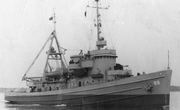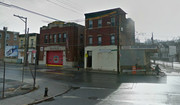Engine 59/Ladder 30 firehouse 111 W. 133rd Street Harlem, Manhattan Division 6, Battalion 16 ?The Harlem Zoo?
Engine 59 organized 180 W. 137th Street 1894
Engine 59 new firehouse 111 W. 133rd Street w/ Ladder 30 1962
Ladder 30 organized 104 W. 135th Street 1907
Ladder 30 new firehouse 111 W. 133rd Street w/Engine 59 1962
Squad 1 organized 180 W. 137th Street at Engine 59 1955
Squad 1 new firehouse 111 W. 133rd Street at Engine 59 1962
Squad 1 moved 451 E. 176th Street at Ladder 58 1972
Squad 1 moved 925 E. Tremont Street at Engine 45 1975
Squad 1 disbanded 1976
Ambulance 1 located 111 W. 133rd Street at Engine 59 1972-1987
111 W. 133rd Street:







Engine 59:






Ladder 30:









Squad 1 at Engine 59/Ladder 30:




Ambulance 1 at Engine 59/Ladder 30:


Engine 59:



Ladder 30 Centennial:
Harlem's Ladder 30 Celebrates 100th Anniversary
NY 1 - May 21, 2007
They're known as the Harlem Zoo - a nickname earned by fighting fires in the ever-changing neighborhood over the last 100 years. NY1's Gary Anthony Ramsay filed the following report.
It was a centennial celebration in Harlem.
For 100 years Ladder company 30 has served this community. On Saturday, tributes to its storied past helped celebrate its birthday.
"The guys that were on the job when I came on the job, we had some World War II vets, and we used to kid them quite a lot," said FDNY Battalion Commander Frank Donnelly.
"The first thing I have to do is straighten out a rumor that Lieutenant Lester Kirk and Chief Billmore we here when the company was organized 100 years ago," said FDNY Chief William Siegal.
They may not have been around back then, but through the century, brothers long gone answered the call. The FDNY says Ladder 30 was the first company to respond to the General Slocum steamer fire in 1904. More than 1,000 died - most of them children.
Then there was the infamous Collyer Brothers' Mansion incident in 1947.
"These two eccentric brothers amassed material, newspapers - they never threw anything out, and it was very hard to negotiate inside this four-story brownstone," said Ladder 30's Keith Nicoliello.
To help mark the occasion, the department's chaplain blessed new plaques honoring seven firefighters who died in the line of duty over the last 100 years.
Another plaque that represents the history of the company was also unveiled - a story that continues to write itself.
"As you continue to respond to each alarm that comes to you in this 21st century this new millennium, may this plaque remind you that every firefighter that has served in there 100 years still rides with you on every run," said FDNY chaplain, Father Chris Keenan.
And on every run 100 years ago and likely a hundred years from now. (from UFA website)
https://firefighterspot.com/2007/05/21/fdny-harlem-ladder-30-celebrates-100-years/
Engine 59/Ladder 30:
https://www.youtube.com/watch?v=7PabIkK451M
https://www.youtube.com/watch?v=e1zAz_rX8bY
https://www.youtube.com/watch?v=otuYTba4X3o
https://www.youtube.com/watch?v=nWLsbGgv8Hg
https://www.youtube.com/watch?v=NsixwQDQUJ8
Engine 59/Ladder 30 medals:
JACOB GOLDSTEIN CAPT. ENG. 59 DEC. 15, 1950 1951 FDR
LAWRENCE F. DUENAS FF. ENG. 59 AIDE TO B-16 OCT. 11, 1962 1963 JAMES GORDON BENNETT
FRANK NIEVES FF. ENG. 59 JAN. 23, 1971 1972 STEUBEN

ROBERT L. CANTILLO LT. ENG. 59 MAR. 21, 1973 1974 STIEFEL
THOMAS C. MOORE FF. ENG. 59 L-30 MAR. 6, 1992 1993 HISPANIC
DAVID H. MULLEN FF. LAD. 30 DEC. 24, 1908 1909 WERTHEIM

HAROLD J. BURKE CAPT. LAD. 30 APR. 22, 1928 1929 CRIMMINS
FRANK J. HINES FF. LAD. 30 APR. 16, 1928 1929 VAN HEUKELOM
EDWARD L. EGAN FF. LAD. 30 DEC. 10, 1929 1930 VAN HEUKELOM
JAMES J. STEAKEM FF. LAD. 30 APR. 10, 1930 1931 PRENTICE

LODD - FF James J. Steakem, Ladder 30, May 15, 1940
THOMAS A. MC COY LT. LAD. 30 APR. 10, 1930 1931 BROOKMAN
JOSEPH W. GOLDEN FF. LAD. 30 JUL. 18, 1934 1935 TREVOR-WARREN
GERARD M. VON ACHEN FF. LAD. 30 MAR. 21, 1936 1937 SCOTT
EDWARD J. NELSON FF. LAD. 30 JAN. 25, 1941 1942 HUGH BONNER
EDMUND O'CONNELL FF. LAD. 30 FEB. 15, 1945 1946 LA GUARDIA
JAMES P. TRAINOR FF. LAD. 30 NOV. 26, 1946 1947 BROOKMAN

CLYDE J. WALTERS FF. LAD. 30 FEB. 27, 1952 1953 THIRD ALARM

JOHN J. HUNT FF. LAD. 30 APR. 7, 1953 1954 THIRD ALARM
SAMUEL WERBLOOD FF. LAD. 30 DEC. 4, 1954 1955 THIRD ALARM
FRANK P. SAVINO FF. LAD. 30 JAN. 30, 1955 1956 KANE
LEONARD F. LA ROTONDO FF. LAD. 30 FEB. 19, 1970 1971 PRENTICE
LOUIS J. TESIO FF. LAD. 30 NOV. 25, 1970 1971 KENNY
GERARD D. GUILFOYLE FF. LAD. 30 FEB. 14, 1974 1975 JOHNSTON
WILLIAM M. HAMMEL FF. LAD. 30 FEB. 6, 1974 1975 PULASKI
DANIEL J. HARRINGTON FF. LAD. 30 JAN. 25, 1978 HUGH BONNER
ANDREW E. DEVLIN FF. LAD. 30 MAY 8, 1985 1986 TREVOR-WARREN

ANTHONY MONTARULI FF. LAD. 30 DEC. 18, 1986 1987 CONRAN

BRUCE T. GARCIA FF. LAD. 30 DEC. 7, 1991 1992 CRIMMINS

JAMES R. CURRAN FF. LAD. 30 AUG. 22, 1992 1993 SIGNAL 77
ALBERT A. MOLINARI FF. LAD. 30 AUG. 22, 1993 1994 COMPANY OFFICERS
JAMES R. CURRAN FF. LAD. 30 OCT. 28, 1994 1995 AMERICAN LEGION
JAMES R. CURRAN FF. LAD. 30 MAY 13, 1994 1995 CONRAN
WILLIAM J. SLATTERY FF. LAD. 30 MAY 6, 1995 1996 WAGNER
MICHAEL J. LYONS LT. LAD.30 AUG. 26, 2007 2008 MARTIN


TIMOTHY P. HARRIS FF. LAD 30 MAY 28, 2012 2013 MCELLIGOT


Engine 59/Ladder 30 LODDs:
FIREFIGHTER STEPHEN T. RAY, JR. ENGINE 59 March 6, 1911
FF Ray was assigned to Engine 59. On March 5, 1911, while responding to an alarm near West 138 Street & Madison Avenue (box 2-2-535), FF Ray was thrown from the wagon. He succumbed to his injuries on March 6.
Police Lieutenant Malcolm Ray in charge of the Tremont Avenue police station in the Bronx had to notify families of serious injuries or deaths to family members within his precinct. On March 5, 1911 he was told that a fireman was seriously injured while responding to a two-alarm fire. The fireman was his brother Stephen Ray of Engine Company 59. The company was responding to a fire in a tenement house at 2160 Madison Avenue. As the tender swung around the corner, it slid into a hydrant throwing Ray to the ground. The rear wheel passed over his chest. He was placed in the hose wagon hurriedly taken to Harlem Hospital. His collarbone and several ribs had been broken and the physicians said that he had edema of the lungs and slight chance of recovery. He died the next day from his injuries. (from "The Last Alarm")
FIREFIGHTER DAVID J. O'KEEFE ENGINE 59 May 2, 1952

FIREFIGHTER JAMES J. STEAKEM LADDER 30 May 15, 1940

Fireman James J. Steakem reported to the quarters of Ladder 30 at 4:00 p.m. for his regularly scheduled tour of duty. Ladder 30 responded to 2182 Lexington Avenue for a small fire at 5:28 p.m. The company returned to quarters at 5:40. At 6:45 Fireman Steakem reported to the company officer that he was suffering severe chest and stomach pains. An ambulance was called and Fireman Steakem was transported to Knickerbocker Hospital at 70 Convent Avenue. Doctors thought that he was suffering from a ruptured gastric ulcer, but at 2:10 a.m. on May 15 he died of a heart attack. Fireman Steakem was appointed to the Department on February 1, 1920 at the age of 33 and was married. He spent all of his time in the Fire Department in Ladder 30. (From "The Last Alarm)
FIREFIGHTER EDWARD J. NELSON LADDER 30 April 26, 1944

Edward James Nelson was a New York City Fireman assigned to Hook and Ladder 30. He had served in the United States Marine Corps from April 30th 1934 to April 29th 1938. During World War II, he was inducted into the United States Naval Reserve on August 11th, 1942, as a Lieutenant assigned to VRF-1 Squadron. His armed service number was 192635. He died on active service on April 26th 1944. (from National Archives)
FIREFIGHTER LAWRENCE FRANKLIN LADDER 30 February 19, 1969
Fireman Lawrence Franklin, Ladder 30, 16-year veteran, died as a result of injuries sustained while operating at Box 66-1577, Lenox Avenue and W. 138th Street.
RIP. Never forget.
Harlem:

https://en.wikipedia.org/wiki/History_of_Harlem

















































































































































































